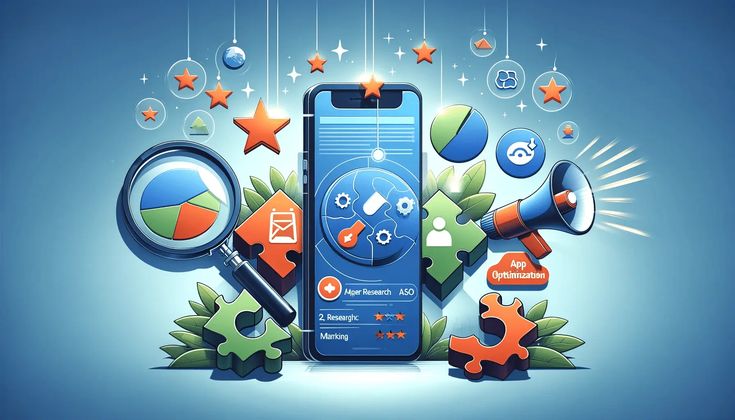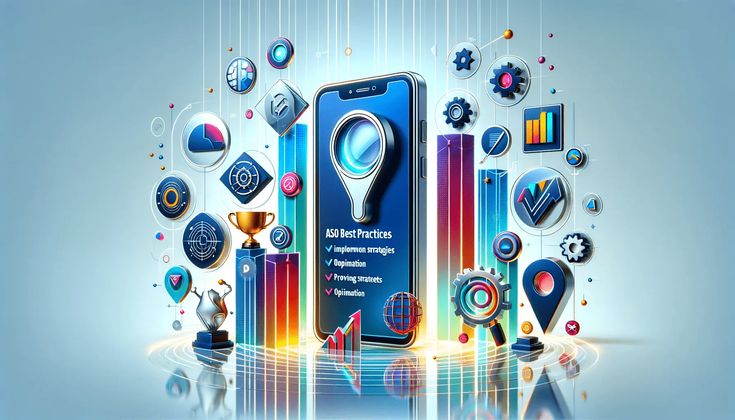Optimizing your app listing for both the App Store (iOS) and Google Play Store (Android) is crucial for app discovery, visibility, and conversion. If you want to increase app installs and ensure your app stands out in a crowded marketplace, your listing needs to be both strategically crafted and well-optimized. This process, known as App Store Optimization (ASO), involves a combination of tactics focused on improving your app’s searchability, appeal, and user engagement.
Let’s dive into the comprehensive steps you can follow to optimize your app listing for both platforms.
1. Conduct Thorough Keyword Research
The first step in ASO is keyword research. Both the App Store and Google Play use keywords to determine the ranking of your app in search results. The right set of keywords can boost your app’s visibility and attract high-quality users.
How to Conduct Keyword Research:
- App Store: Focus on short, high-intent keywords that users are likely to search for. Tools like App Annie, Sensor Tower, and Keyword Tool for ASO can help you find keywords with high search volume and low competition.
- Google Play: Google Play leverages Google Search to index your app, so you have a broader scope for keyword integration. Use the Google Keyword Planner and Google Trends to identify keywords that are trending in your app’s category.
Key Areas for Keyword Integration:
- App Name/Title: Include your primary keyword in the app title for both stores. Make sure it’s catchy and clearly conveys your app’s purpose.
- Subtitle/Short Description: In the App Store, you can use the subtitle for secondary keywords. Google Play has a short description that allows you to add more keywords without stuffing.
- Long Description: Google Play allows you to write a long description where you can naturally integrate additional keywords.
- App Metadata (in both stores): Both platforms allow metadata like category, language, and URL, where you can optimize keywords.
2. Craft a Compelling App Title and Subtitle
Your app’s title is one of the most important ranking factors in both the App Store and Google Play Store. It’s essential that your title is optimized for keywords while also being appealing to potential users.
App Title Optimization Tips:
- Incorporate a primary keyword: Ensure that the title accurately describes your app. For example, if your app is a fitness app, using “FitLife: Fitness Tracker & Workouts” might attract users searching for fitness apps.
- Brand Name: If your app has a recognizable brand name, including it can help with brand visibility. For example, “Spotify: Music & Podcasts”.
- Keep it concise: On the App Store, your title can be up to 30 characters, while on Google Play, it can be up to 50 characters. Keep it concise but informative.
Subtitle (App Store Only):
- You can include secondary keywords here to increase discoverability. Make sure it complements your app’s main title. For instance, “FitLife: Fitness Tracker & Workouts – Stay Healthy Anytime”.
3. Create an Engaging App Description
Your app description is where you can explain the benefits and features of your app, highlighting why users should download it.
App Store:
The App Store provides you with a long description (up to 4,000 characters). Focus on:
- Start with a hook: The first few lines should grab the user’s attention by explaining the app’s core value.
- Explain the core features and benefits: Be concise and highlight the most important features of the app.
- Use bullet points: Bullet points help break up the text and make it easier for users to scan.
- Call to Action (CTA): End your description with a CTA encouraging users to download the app.
Google Play:
- Google Play provides a long description (up to 4,000 characters) as well, and similar to the App Store, you want to start with the most compelling benefits. Google’s algorithm also considers user reviews and engagement, so make sure your description is customer-focused.
- Use keywords naturally in your long description. However, avoid keyword stuffing, as it can negatively impact readability and user experience.
4. Use High-Quality Screenshots and Videos
Visual assets play a critical role in app conversion. Whether it’s the App Store or Google Play Store, users often rely on visuals to make decisions. Optimizing your app’s screenshots and promotional videos will increase the likelihood of a user downloading your app.
App Screenshots:
- App Store: The App Store allows you to upload up to 10 screenshots per device type. Use high-quality, visually appealing images that highlight your app’s most important features and benefits. Make sure the screenshots reflect the most common user experience, such as core features, design, and interface.
- Google Play: Google Play allows you to upload up to 8 screenshots, but like the App Store, quality matters. Ensure you showcase features that stand out and are highly relevant to your target audience.
Promotional Videos:
- App Store: The App Store allows you to add a promotional video that appears at the top of your app’s page. Use this feature to demonstrate how your app works, highlight its value, and capture the user’s attention quickly. Keep the video short (30-60 seconds) and engaging.
- Google Play: You can add a YouTube link for a video in your app’s listing. Ensure the video showcases your app’s user interface, the main features, and highlights its unique selling points.
5. Focus on App Icon Design
Your app icon is often the first impression users will get of your app. It must be distinctive, memorable, and visually appealing. The icon should be clear, simple, and represent the purpose of the app.
Tips for Icon Optimization:
- Keep it simple and avoid clutter. A clean, minimalistic design stands out more.
- Use bold colors that will stand out in the crowded app marketplace.
- The icon should be scalable and look good in both large and small formats.
- Ensure that it is recognizable and aligned with your brand identity.
6. Leverage User Reviews and Ratings
User reviews and ratings are an important ranking factor and social proof for potential users. A high rating can increase your app’s credibility and encourage new users to download.
Strategies to Improve Reviews and Ratings:
- Prompt users for feedback: Within the app, politely ask satisfied users to leave a review. Don’t do this too often or at intrusive moments.
- Respond to reviews: Both stores allow developers to respond to user reviews. Address user concerns, thank users for their positive feedback, and show that you care about their experience.
- Address negative reviews: Respond professionally to negative reviews and offer solutions. This can show that you’re proactive about improving your app.
Encourage Reviews:
- Include a clear call-to-action within your app, such as “Rate Us on the App Store/Google Play”.
- Consider offering incentives, like access to exclusive features or content, in exchange for ratings.
7. Optimize for Localization
Localization helps your app reach a global audience. If you want to expand your app’s user base, you need to translate your app’s title, description, and keywords into different languages to attract non-English-speaking users.
How to Localize Your App:
- App Store: The App Store allows you to localize the app’s name, description, and keywords for different regions. You can also upload localized screenshots and promotional videos.
- Google Play: Google Play also supports localization. Use Google Play Console to manage translations for different languages.
8. Update Your App Regularly
Both the App Store and Google Play reward apps that are regularly updated with bug fixes, new features, and improvements. Regular updates signal to both users and app store algorithms that the app is being actively maintained and improved.
Tips for App Updates:
- Highlight new features or bug fixes in the release notes to show users that the app is actively maintained.
- Regular updates can improve user retention and app performance, which can positively impact your app’s ranking in the app stores.
9. Ensure Proper App Category Selection
Choosing the right category for your app helps with app discoverability. Ensure your app is listed under the most relevant category to reach the right audience.
- App Store: The App Store allows you to choose a primary and a secondary category. Make sure you select the category that most closely aligns with your app’s features and use case.
- Google Play: Google Play also lets you choose categories. Select the category that represents your app the best, such as Lifestyle, Productivity, Health & Fitness, etc.
10. Track Performance and Iterate
Lastly, ASO isn’t a one-time task—it’s an ongoing process. To continue optimizing your app’s listing and performance, regularly track key metrics like installs, user engagement, and rankings. Use tools like App Annie, Google Analytics, or Sensor Tower to monitor performance and make informed decisions.
Key Performance Metrics:
- Installs: Track how many downloads your app receives.
- Conversion Rate: Monitor how many users actually install the app after viewing the listing.
- Uninstall Rate: A high uninstall rate might indicate that your listing is misleading or that the app doesn’t meet user expectations.
- Retention Rate: Track how many users are returning to your app after the first install.
Conclusion
App Store Optimization (ASO) is a powerful strategy for improving your app’s visibility, user acquisition, and overall success. By optimizing your app listing for both the App Store and Google Play, you’ll improve the chances of attracting the right users, improving conversion rates, and boosting app performance. From keyword optimization to using compelling visuals and leveraging user feedback, every aspect of your app listing plays a critical role in its success.
By following these steps, you will enhance the discoverability and appeal of your app on both platforms, ultimately driving more installs and fostering a loyal user base.




